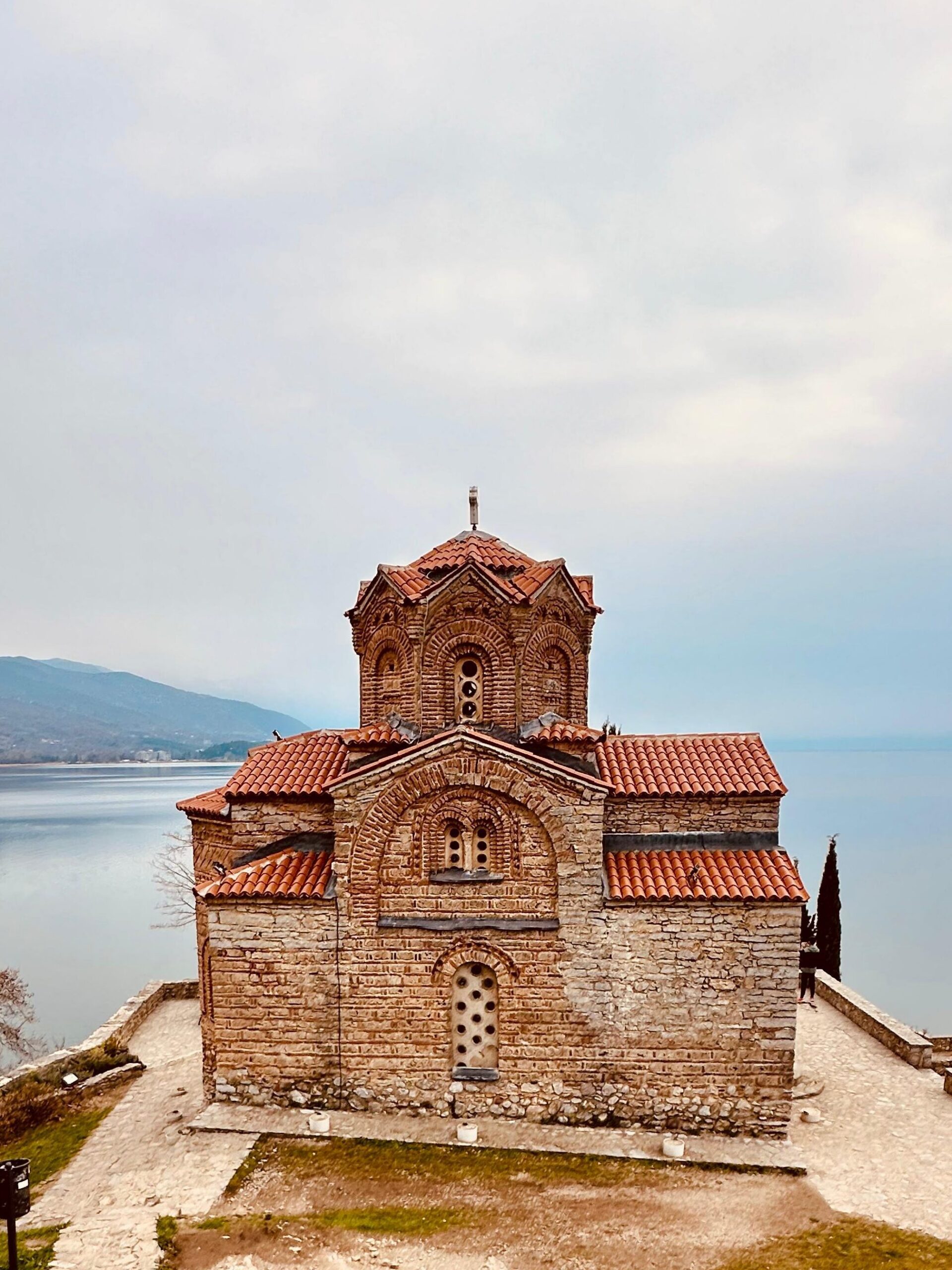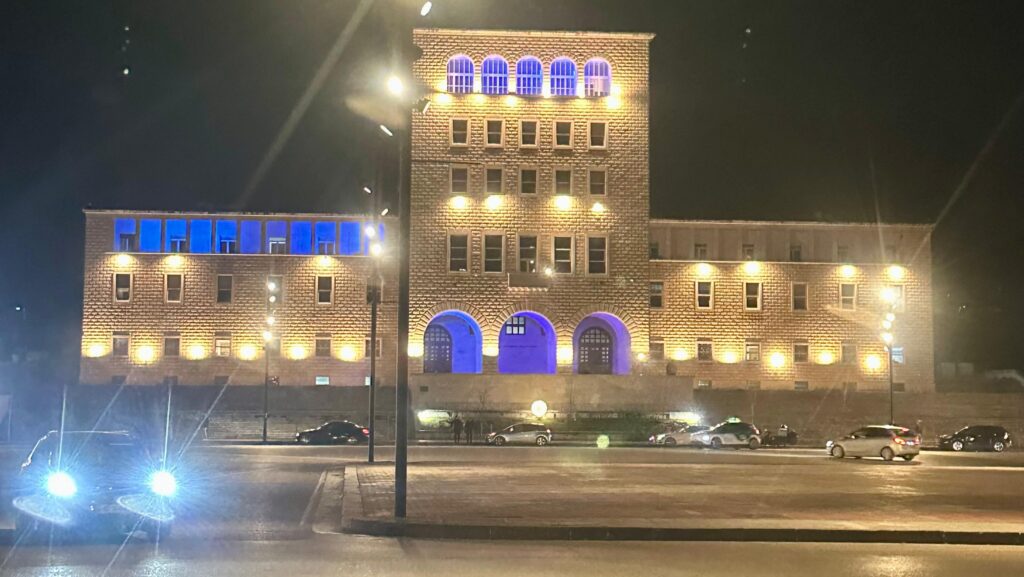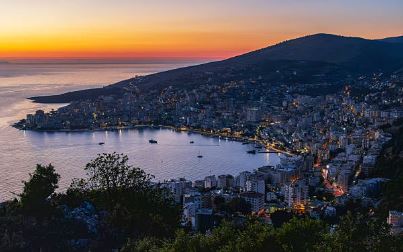
A Scenic Detour into North Macedonia
Before crossing the border into North Macedonia, we stopped at a quaint restaurant near the highway to enjoy a hearty, authentic Albanian meal—delicious, simple and very reasonably priced. Having started our journey earlier that morning from Tirana, we were eager to experience more of the region’s natural beauty. After lunch, we continued on to Lake Ohrid, a UNESCO World Heritage Site shared by Albania and North Macedonia. Interestingly, Albania shares borders not only through Lake Ohrid, but also via Lake Skadar (with Montenegro) and Lake Prespa (with North Macedonia and Greece), highlighting just how closely knit these Balkan countries are.
I spent around 3 to 4 peaceful hours exploring the town of Ohrid, which was relatively quiet due to it being the low season in early February—an ideal shoulder season that we highly recommend for travelers to explore , especially if they are looking to avoid crowds.

Walking Through The Illuminated Charm of Tirana
After a lovely afternoon in Ohrid, I returned to Tirana and explored the capital on foot. The city was beautifully illuminated at night, especially around its two main squares—Mother Teresa Square and the iconic Skanderbeg Square.
Having completed a workshop and networking event with our future local partners in Albania, it was time to dive deeper into the country’s southern wonders, starting right from Tirana.
Tirana: A City of Stories and Structures
Tirana has only been the capital since 1920, with Albania having declared its independence from Ottoman rule in 1912. Although not the country’s oldest city (that distinction goes to Durrës, dating back to the 7th century BC), Tirana has grown into a dynamic urban center.
We explored some of the city’s most important cultural landmarks, including:
- The Opera & Ballet Theatre
- The National History Museum
- The Clock Tower
- Palace of Culture
- National Arena – the country’s main football stadium
As we walked past the Prime Minister’s Office and Albanian Parliament, we noticed high-ranking officials entering the buildings with minimal security—a powerful testament to the country’s reputation for safety and peace.

Traces of the Past: Dictatorship and Artistic Revival
Some relics from the era of Enver Hoxha’s dictatorship remain scattered across Tirana. One such notable structure is The Pyramid, originally built to honor the late dictator and now repurposed for cultural and artistic events.
Tirana also boasts an impressive art scene, with numerous museums and galleries. A must-visit is the Et’hem Bey Mosque, one of Albania’s most well-preserved and beautiful religious monuments. Additionally, two fascinating museums are housed inside former bunkers, offering unique insight into Albania’s Cold War-era paranoia and architectural ingenuity.
Dining, Markets & Café Culture
Tirana’s culinary offerings are a delightful blend of history and local flavor. From seafood specialties—thanks to the country’s Adriatic and Ionian coastlines—to cozy bars and markets, the city has something for everyone. You’ll find great value in even the non-touristy restaurants, with a glass of local wine priced around €10– €15.

Tirana to Berat: The City of 1000 Windows
From Tirana, we set off towards Berat, one of the highlight destinations in any Albanian itinerary and a UNESCO World Heritage Site. En route, we passed through Elbasan, a well-known historic town.
As we approached Berat, the landscape transformed into rolling hills and countryside vistas. Also known as the “City of a Thousand Windows,” Berat greeted us with a mix of Ottoman architecture and postcard-perfect views.
We began our exploration with the Onufri Iconographic Museum, home to an exceptional collection of religious art and icons. The backdrop of Mount Tomorr provided breathtaking scenery throughout.
Next, we visited the Berat Castle, an ancient fortress that still houses local families and several important monuments. Within the castle walls, don’t miss:
- St. Mary’s Cathedral, known for its golden doors
- The iconic double-headed eagle statue from the Albanian flag
A short drive away led us to the Pupa Winery, one of the best local vineyards in the Berat region. Albania’s wine culture is quietly thriving—spread across 35000 hectares, many vineyards like Pupa also operate boutique hotels and restaurants. Some popular grape varieties include:
- Puls (used for white wine)
- Dirbolli (for rosé)
- Serina and Cabernet Sauvignon (for red wines)
We also sampled the local Raki, a strong fruit brandy popular throughout the Balkans—just one of the many authentic experiences you can enjoy when exploring the region with thoughtful planning and local insight, something Namaste Tourism takes pride in curating.

A Stop at Mandalini and Overnight in Vlorë
Before ending the day, we stopped at Mandalini, home to the King’s Mosque, dating back to the 15th century. As the sun began to set, we made our way to Vlorë, a scenic coastal town where we spent the night at a local hotel, wrapping up a day full of history, culture and regional charm.
Stay tuned for Part 3

